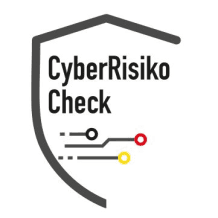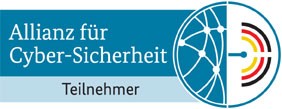Secure coding refers to the systematic development of software with particular consideration of security aspects. In times of increasing cyber threats, the need to write program code that is not only functional but also resistant to attacks is growing. This guide provides an in-depth insight into the principles, best practices, and common methods of secure coding. Key questions such as "What is secure coding?", "Why is secure programming so important?" and "How can effective security measures be implemented in code?" are thoroughly discussed.
Introduction to Secure Coding
The concept of secure coding arose from the growing realization that software containing security vulnerabilities can pose a significant risk. Attackers exploit weaknesses in the code to gain unauthorized access, steal data, or take down systems. Therefore, modern development processes must consider security aspects from the very beginning. The use of secure coding techniques not only reduces the likelihood of security incidents but also enhances the overall trustworthiness of the software.
What is Secure Coding?
Secure coding refers to a set of programming practices aimed at minimizing security risks. It includes guidelines, frameworks, and techniques that help developers identify and eliminate potential vulnerabilities early on. This involves proper handling of input data, protection against common attacks such as SQL injection or cross-site scripting (XSS), as well as the use of secure libraries and frameworks. Additionally, continuous monitoring of the code through code reviews and automated security analyses plays an essential role.
Why is Secure Coding Important?
The security architecture of software begins at the programming stage. Errors or unsafe assumptions in the code can lead to serious security gaps that can be exploited by hackers. A few key reasons for secure coding include:
Avoidance of security vulnerabilities: By integrating security measures early, common attack vectors such as buffer overflows, injection attacks, or insecure deserialization can be prevented.
Protection of sensitive data: Applications that are not securely programmed are often vulnerable to data leaks. Secure coding protects personal data, financial information, or other highly sensitive information.
Compliance with legal requirements: In many industries, such as finance or healthcare, strict security standards and data protection regulations are mandated. Secure coding helps in fulfilling these legal requirements.
Cost efficiency: Security gaps discovered only in operation can lead to expensive emergency measures and reputational damage. Investments in secure programming pay off in the long run.
How is Secure Coding Implemented in Practice?
The implementation of secure coding ideally begins in the conceptual phase of a software project. It's advisable to create a security concept that identifies risks and defines appropriate measures. The following outlines some of the central approaches and methods in detail:
Validate and filter input data:
Checking user input is one of the cornerstones of secure coding. All inputs should be strictly validated—whether through whitelist or blacklist methods. When processing data, it's important to recognize and block potentially malicious inputs before they enter security-critical areas of the application.
Principle of least privilege:
Each component and process of the software should have only the minimal necessary rights. This significantly reduces the risk of an attack in the event of a security breach. It is advisable to clearly define roles and access rights and to regularly review them.
Use of current frameworks and libraries:
Developers should always stay up to date with technology and use libraries that are regularly maintained and checked for security vulnerabilities. Old or outdated libraries significantly increase the risk of attacks.
Secure error handling:
Robust error handling prevents sensitive information from reaching end users or potential attackers. It should be avoided to disclose technical details in error messages that allow conclusions about the internal architecture of the application.
Automated tests and code reviews:
It is advisable to integrate automated security checks into the development process. Static Application Security Testing (SAST) and Dynamic Application Security Testing (DAST) are methods that continuously check the code for known security vulnerabilities. Additionally, regular code reviews help identify and fix code weaknesses early on.
Encryption and secure communication:
Encrypting sensitive data—both at rest and during transmission—is an essential component of secure coding. Implementing strong encryption algorithms and using protocols such as TLS secures communication between different systems.
What Challenges Exist in Secure Coding?
Secure coding is by no means a panacea. Despite careful planning and comprehensive security measures, vulnerabilities can still arise. Some of the biggest challenges are:
Complexity of modern systems:
The increasing complexity of software systems makes it difficult to fully grasp all interactions and dependencies. In such environments, it is often challenging to identify all potential attack surfaces.
Legacy systems and outdated code:
Many companies still operate older systems into which modern security standards are hard to integrate. The continuous maintenance and updating of such systems requires special attention and specialized strategies.
Time pressure and lack of resources:
In agile development environments, there is often high pressure to quickly bring functional software products to market. This can lead to security issues being neglected at the expense of development time, resulting in increased risk in the long term.
Lack of security awareness:
Not all developers have the necessary knowledge to recognize and avoid potential security risks. Ongoing training and awareness programs are therefore essential to instill a deep security understanding within the team.
What are the Best Practices in Secure Coding?
Training and awareness:
Regular training and workshops on current security topics strengthen developers' awareness of potential risks. It is crucial for developers to know the significance of secure coding and understand how to apply theoretical knowledge in practice.
Integration into the development process:
Security checks should be an integral part of the Continuous Integration/Continuous Deployment (CI/CD) process. Automated tests and code scans can help detect and fix errors early on.
Documentation and standards:
Comprehensive documentation of security policies and processes within a project makes it easier for all team members to adhere to established best practices. Standardized procedures and checklists ensure consistent and traceable development processes.
Community and exchange:
Networking with other developers and security experts—through forums, conferences, or open-source initiatives—enhances knowledge about new threats and solutions in the area of secure coding.
Continuous updates:
The security landscape is constantly evolving. Security policies must be regularly revised and adapted to new threats. Additionally, the use of automated update mechanisms for frameworks and libraries plays a significant role.
How does Secure Coding Help Companies?
For companies operating in an increasingly digital world, secure coding is a crucial factor for long-term competitiveness. By implementing secure programming practices, companies can achieve the following benefits:
Reduction of security incidents and protection of critical enterprise data.
Enhancement of customer trust, as secure applications promote the image of a reliable provider.
Long-term cost savings, as preventive security measures prevent expensive emergency repairs and loss of reputation.
Compliance with legal and regulatory requirements, which are already mandated in many industries.
What technologies and tools support Secure Coding?
In the field of secure software development, there is a wide range of




